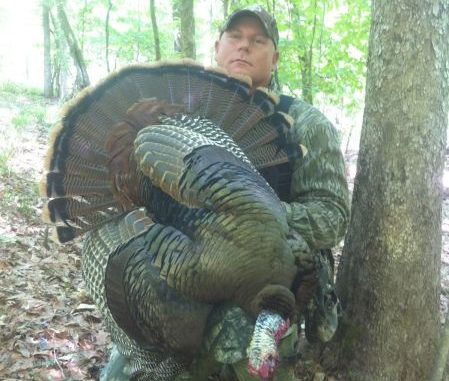
2013 turkey-hunting season holds great promise because of successful 2012 hatch, LDWF says.
Turkey season kicks off March 23, and hunters should expect to find more turkeys in the woods, the Louisiana Department of Wildlife & Fisheries said.
That’s because the turkey hatch last spring was generally up from 2011 throughout the state, with the exception of the Atchafalaya River and lower Mississippi River delta regions, LDWF’s Jimmy Stafford said.
That’s great news for hunters like Clinton’s Glen Peterson, a seasoned veteran with over 30 years of experience in killing gobblers.
He said scoring on a bird begins with narrowing down the terrain even before the season opens.
“Try to find a high vantage point to sit and listen at the crack of daylight,” Peterson said. “If you hear one gobbling, note what direction he goes after fly-down. “Maybe bring a crow call or an owl hooter to try and raise a gobbler. Refrain from bringing a turkey call, though; it’s too tempting to try and call them. Walk out your logging roads, creek bottoms and food plots, if you have them.
“Look for tracks and look for strutting zones; if you find a strut zone, it’s a good place to set up. Sooner or later they will show up.”
After the season starts, calling often times, makes or breaks the hunt. Peterson believes that less is more.
“I’m kind of old school, and most of my mentors didn’t call to a turkey until they knew he was on the ground,” he said. “I know lots of hunters call to a roosted gobbler a good bit, but for me I try to refrain from calling too much until he hits the ground.
“If you must call, try to make some low-volume tree yelps — just a little to let him know you’re there.”
If you’re going to try and sneak up on a roosted gobbler, Peterson shared some tips to make your venture successful.
“I like to get within 150 yards or closer, if possible. This depends on the terrain and also how much foliage is out,” Peterson said. “The later it is in the spring the closer you can get, due to the thicker foliage.
“I like to creep in as close as possible without being detected so that no hens or hunters can come between the gobbler and me.”
Once Peterson is close enough, he waits until the gobbler flies down before making a fly-down cackle and use a wing to imitate a hen flying down. After the fly-down, it depends on how the turkey is responding, Peterson said.
“If the gobbler is hot and fired up, I’ll call to him. If he’s quiet I won’t call,” Peterson explained. “I’ll do things like scratch the leaves with my hand and brush the leaves with a wing to imitate a hen.”
Daybreak is prime gobbling time, according to Peterson. This is the best time to find a roosted, gobbling turkey. There are other times and methods used to hunt gobblers though.
“You may just have to go and sit near a food plot or a trail and just wait if you’re hunting in the afternoon,” Peterson said. “I’ll just sit, wait and call until I get a response. Sometimes, if I hear a gobble of in the distance, I’ll get up and move towards it.”
Some hunters ‘run and gun’ through the woods for turkeys. He does not suggest that hunters do this though. Turkeys have extremely keen eyesight and hearing. A hunter trying to walk the woods for gobblers will, more than likely, just spook all of the turkeys in his area, according to Peterson.


